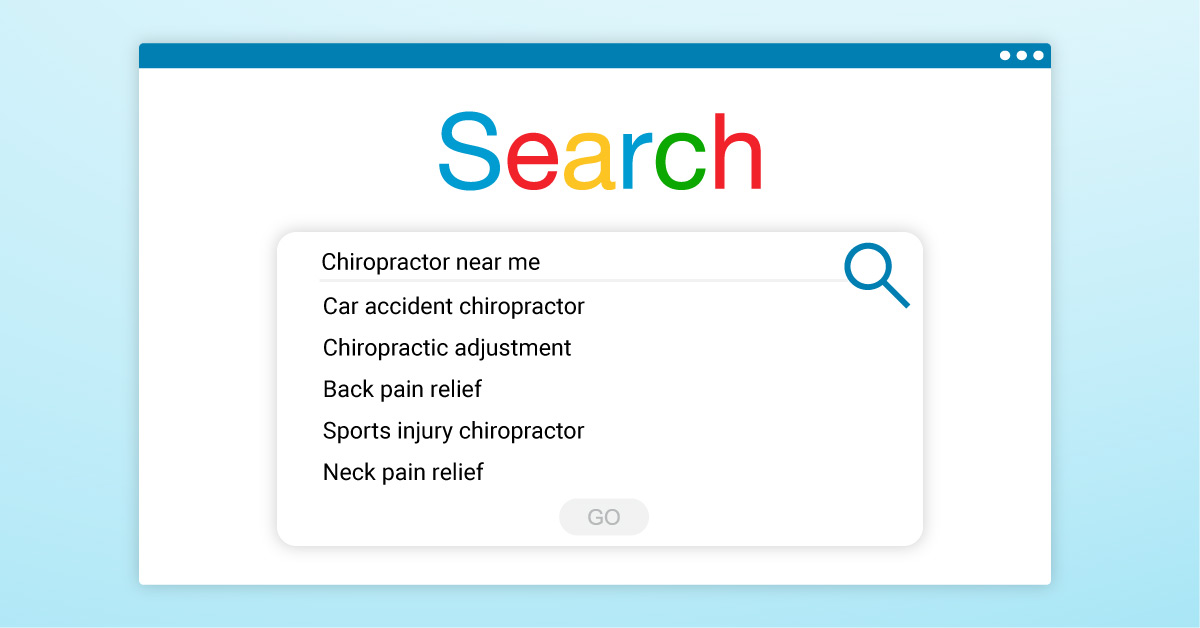SEO for Mobile: 10 Tips from Industry Experts
In 2008, the Pew Research Center predicted that mobile phones would become the primary way people connect to the Internet, with significant computing power. Over a decade later, this prediction came true, as more than half of worldwide web traffic comes from mobile devices.
The shift from accessing the Internet only from computers to an increasing number of access via mobile and handheld devices brought significant changes to how websites are designed. Today, web pages must be responsive to cater to the majority of internet users on a mobile device.

After a seven-year transition, Google shifted to mobile-first indexing, meaning it now prioritizes the mobile version of web pages when crawling and indexing. It even penalizes websites that aren’t optimized for mobile users.
In short, being mobile-friendly is a must for websites nowadays. Mobile search engine optimization (SEO) can open many doors for your healthcare business. This blog will have our top mobile SEO tips to learn how to create an effective mobile SEO strategy.
But What Exactly Is Mobile SEO?
First, it’s vital to understand SEO. Short for search engine optimization, SEO is the process of enhancing your website for increased search engine visibility. Your SEO efforts allow your website to appear higher on search results for FREE.
Mobile SEO involves optimizing a website so it functions well on mobile devices. Mobile SEO allows you to provide users with a positive experience since your website looks great on any device category, regardless of its screen size.
Mobile SEO is a more focused aspect of SEO, as it involves optimizing a website’s layout for mobile devices specifically and ensuring that content like images, text, and code is easily accessible on mobile. Web speed, loading times, and functionality are crucial in mobile SEO. The small details that enhance your mobile site’s accessibility can make a significant difference.

Why Should Companies Optimize for Mobile Devices?
What benefits can companies gain by focusing on having a mobile-friendly site? We’ll discuss several factors that make mobile SEO important.
Search Engines Use Mobile-First Indexing
In 2015, Google announced that more mobile searches were conducted than desktop searches. This shift prompted a mobile-first index, which means that Google reviews your mobile website first before deciding where to place it on search results.
If your website is inaccessible to mobile users, it will negatively affect your search engine rankings. This inaccessibility leads to less web traffic, fewer leads, and lower revenue for your business. You won’t just reduce mobile traffic; you might also not be seen by desktop users on search engine results pages.

Being Mobile-Friendly Improves Customer Experience
One of the most vital aspects of mobile SEO is providing users with the best mobile user experience. Without a mobile-friendly site, many mobile visitors might form a negative opinion of your company.
Ensuring your site is mobile-friendly can improve people’s perceptions of your business, help you manage your reputation, and improve your website traffic.
Most People Are Online via Mobile
The average person spends approximately four hours and 39 minutes on their mobile device, and most people access the Internet when using their mobile devices. Given how much time people spend on their mobile devices, you must ensure they have a positive experience when they open your mobile site. If you don’t adapt by creating mobile sites, you risk alienating these users, which might hurt your business’s chances of converting them into future clients.
You Can Increase Conversion Rates
Your website’s mobile-friendliness can affect its overall conversion rate. Patients who see that your site works well on their mobile devices are more likely to book an appointment. You’d be more accessible to reach, especially when these mobile users are on the go and in immediate need of your services. A high conversion rate on your website is beneficial for your business.
How to Check if Your Website is Mobile-Friendly

Before developing your mobile SEO strategy, you need to assess your current situation. Fortunately, you don’t need to manually check every page on your website. You can use various online tools to gauge your situation and determine what needs to be done to improve your website.
Google Search Console
Google Search Console permits you to gauge your website performance and traffic, fix problems, and make your website stand out. It even has instructional videos to help you understand its tools. To use the Google search console tool, simply enter your website’s URL, and Google will give you insights to assess its mobile-friendliness.
Other Third-Party Tools
There are many free and paid tools available that can check if your website is mobile-friendly and help guide your mobile SEO strategy. One example is Screaming Frog. This tool can crawl small and large websites effectively. While you may crawl 500 websites for free through this tool, you can unlock many advanced features by subscribing to its premium version.
Another option you can explore is PageSpeed Insights. Powered by Google, this tool requires your website URL to get started.
Read More: Why Your Veterinary Marketing Strategies Need to be Mobile-Focused
10 Tips to Make Your Website Mobile-Friendly

Are you ready to develop a stellar mobile SEO strategy? Here are some helpful tips to ensure your website is accessible to mobile users:
1. Enhance Your Website’s Loading Speed
Mobile site speed is crucial for enhancing your overall website experience. When people search for information from your web pages on the go, they want to find it swiftly. If your mobile page speed isn’t fast enough, your website’s bounce rate might increase.
Reduce Redirects
A redirect leads an internet user from one page to another because it was deleted or moved. If done well, this can improve your website experience. However, the more redirects your website has, the slower your website becomes. Don’t make infinite redirects. Moreover, it would be best to avoid retaining links that lead deleted posts to new ones. Instead, include direct links.
Minify Code
Every request on your site can affect your web speed. To improve your overall speed, you should work towards lessening these requests. This is where minifying code can help. Minifying code means grouping assets like JavaScript and CSS. In turn, the browser must load fewer files, speeding up your website.
You don’t necessarily have to be a web developer to implement this. You can utilize tools like WP Rocket or Cloudflare to simplify this process.
Get Better Web Hosting
Investing in better web hosting is one of the best practices for improving your overall website speed. Many businesses run their websites on budget hosts that share plenty of service space with others, causing their websites to slow down.
You may also explore using a content delivery network to enhance the site’s performance. If your website is on WordPress, you can try reducing plug-in dependency.
2. Integrate a Responsive Design

A responsive web design is integral to creating a mobile-friendly website. Whether they access your site through a mobile device or laptop, you provide a seamless experience.
Integrating a responsive design allows people to navigate your site more easily. They can find the information they need quickly, scroll through pages, and view your website how you intended it to look.
Without a responsive web design, you might drive away potential leads. When it’s challenging for people to navigate your site, they’re likelier to move on to the next best option.
3. Focus on the User Experience
Along with a responsive design, you should ensure your website prioritizes the user experience. A responsive design is the bridge to a happy user experience. When improving your website for mobile SEO purposes, you should also provide a thumb-friendly design. Mobile users often use their thumbs while browsing through a site. Vital elements should be seen while they scroll through your site with their thumbs.
You should ensure that your website font is legible even when accessed through mobile devices. When using a bold font, you should adjust it so it remains readable to mobile users. Moreover, you must ensure that your call-to-action (CTA) buttons can be easily located. CTA buttons allow your website visitors to take action, like booking an appointment or calling your clinic. Your CTA should be big enough for people to see swiftly.
4. Create Mobile-Friendly Content

Another helpful tip is to create mobile-friendly content. To make content optimal for mobile devices, you should ensure it’s easier for people to scroll through them. For example, you can limit paragraphs to two to three sentences so it’s easier for them to scroll through an article.
You should caution against making content too text-heavy. To make the content more engaging, you should include photos and videos. Interactive elements like clickable buttons should also be present so users can easily browse your website.
5. Run a Complete Site Audit
Consider looking at the picture to determine what needs to be done to improve your mobile SEO efforts. You can perform website audits through tools like Ahrefs or SEMRush that explore different aspects of your website and help you determine the next best steps to make your website mobile-friendly.
You can use these tools to track your mobile site’s performance and gauge your competitors’ performance. While the free versions of these tools give you an idea of what needs to be done, investing in premium versions can help you maximize your mobile SEO strategy in the long run.
6. Add Structured Data
Structured data is vital for every website. This standardized format supplies details about a web page and classifies its content. In short, it allows you to describe your content in a way that search engines can comprehend.
The structured data of your desktop and mobile sites should be the same. Otherwise, you might confuse search engines. Consistency is vital to your overall mobile SEO performance.
7. Improve Meta SEO Tags for Mobile SEO

Your title tags and meta descriptions play a vital role in mobile SEO, as they do in your overall SEO strategy. These elements determine whether a person clicks on your pages in search engine results. Since mobile users search for information quickly, they’ll probably read your title tags and meta descriptions to gauge if you can help them.
Title tags are the first thing internet users see in search engine results. They offer a preview of your web page’s content. In short, they provide a preview of your web page. The keywords you use must be relevant to its content, and you should place them at the front of your title tag.
Your meta description is a short blurb that sums up your web page’s content. By keeping it concise and straightforward, you can attract more website visitors.
8. Optimize Images for Mobile Devices
Optimizing your website images is one quick way to improve your web page speed. You should scale your photos to the correct size and compress them using tools like WP Mush or Squoosh. However, you should ensure that your photos don’t look pixelated.
9. Reduce Mobile Pop-Up Intrusiveness
Pop-ups can effectively drive attention to a particular action. Specific actions can prompt pop-ups to appear on one’s screen, but you should be careful when including pop-ups for mobile users. You wouldn’t want pop-ups to take up the entire mobile screen because this might frustrate website visitors.
Hence, you shouldn’t use too many pop-ups on your website because it might drive people away. Use them sparingly and ensure they don’t cover vital information. Moreover, the ‘X’ button should be easily seen at the top of the pop-up so people can exit it if they’re not interested.
10. Implement Easy-to-Use Mobile Navigation and Menus
Your website navigation determines how easily users locate information. If it is too complicated, visitors might get annoyed and abandon your website.
The hamburger menu is one of the best ways to provide a mobile navigation that’s easy to utilize. The hamburger menu shows up as three lines at the top of each web page. Website visitors are directed to a drop-down menu with various web pages they can explore upon clicking this button.
READ MORE: 11 Major SEO Trends You Need to Know in 2024
Get Started with Mobile SEO Optimization
Mobile SEO involves improving your mobile site so it’s more accessible for people to navigate it through mobile devices. Whether a person browses your site through your desktop or mobile version, the experience should be similar. A slow website that looks odd or is too wordy is a big no-no and can frustrate visitors.
Mobile SEO isn’t just a one-time optimization task. You should work continuously to improve your website and monitor its mobile SEO performance. Every few months, you should conduct a check-up to ensure your website remains fantastic on the mobile version.
Need a Mobile Friendly Website for Your Medical Practice?
Incorporating these mobile optimization tips can be challenging for medical experts. Fortunately, iMatrix can help you improve your mobile SEO efforts and maximize your digital marketing tools. Contact us at 800.792.8384 or click here today for a FREE consultation to take your mobile SEO to the next level.
FAQs
What is mobile-first indexing?
This means that when Google categorizes websites, it prioritizes the mobile version over the desktop one.
What are the unique considerations for mobile SEO?
You should ensure that website elements look the same on mobile and desktop and that your website loads fast when accessed through a mobile device.
What is the impact of mobile optimization on user engagement?
The more optimized your website, the more leads you can get from search engine results. Optimizing your site for mobile users can improve your overall user engagement.
What is a key step for mobile search optimization?
Auditing your website is vital to determine what needs to be done to improve your overall mobile SEO efforts.
Can you identify the main differences between SEO and mobile optimization?
SEO accounts for desktop and mobile users, while mobile optimization focuses on your mobile site.
For more help on how to stay on top of all SEO trends, check out these other resources
How to Implement SEO on Your Website
What You Need to Know About Technical SEO



